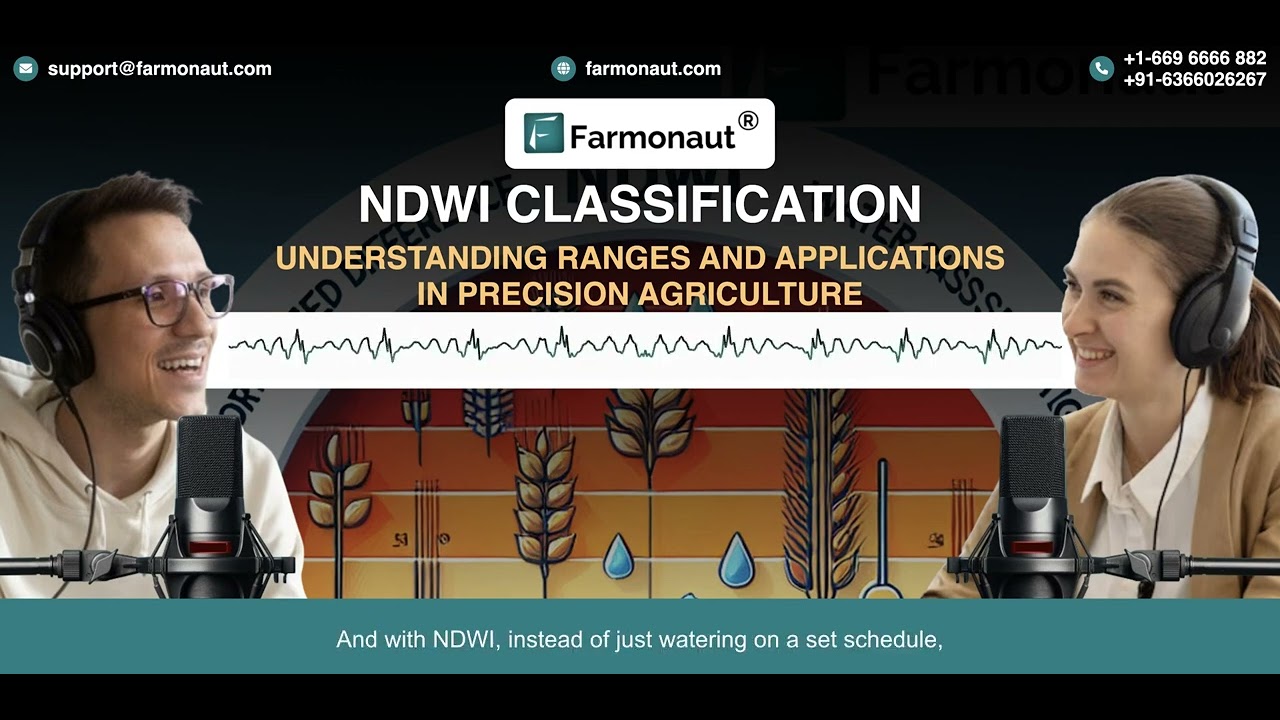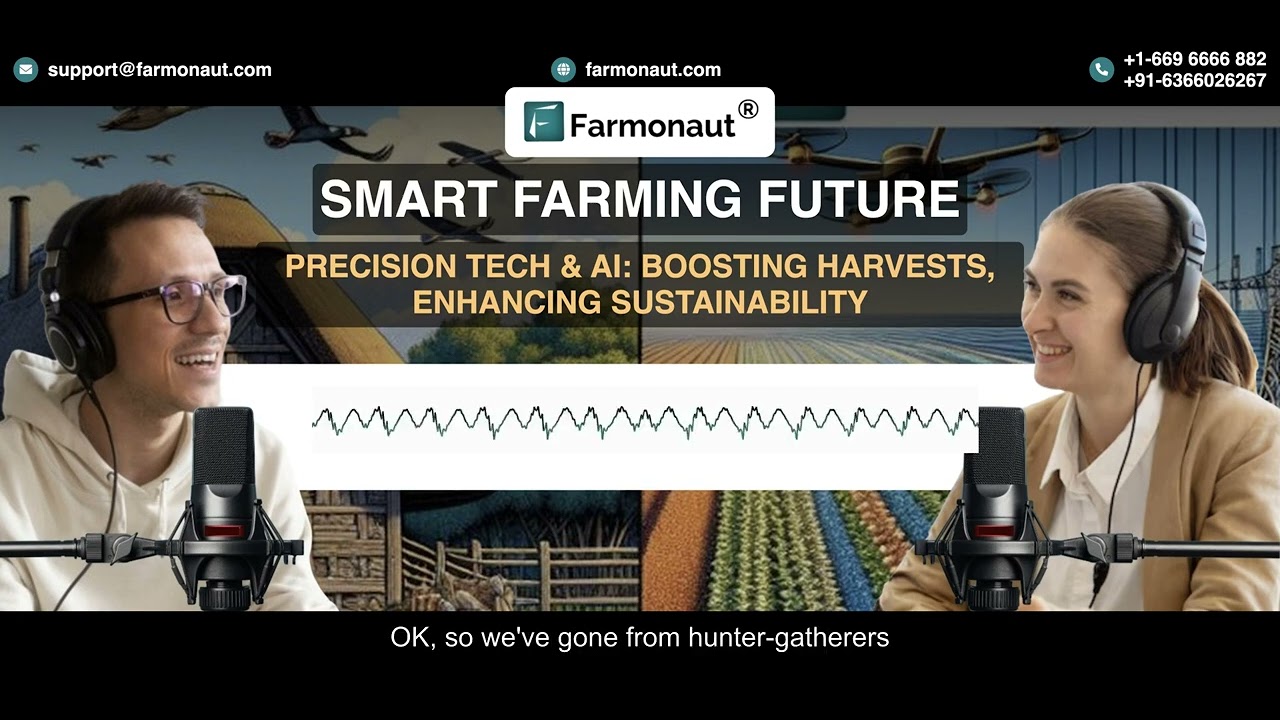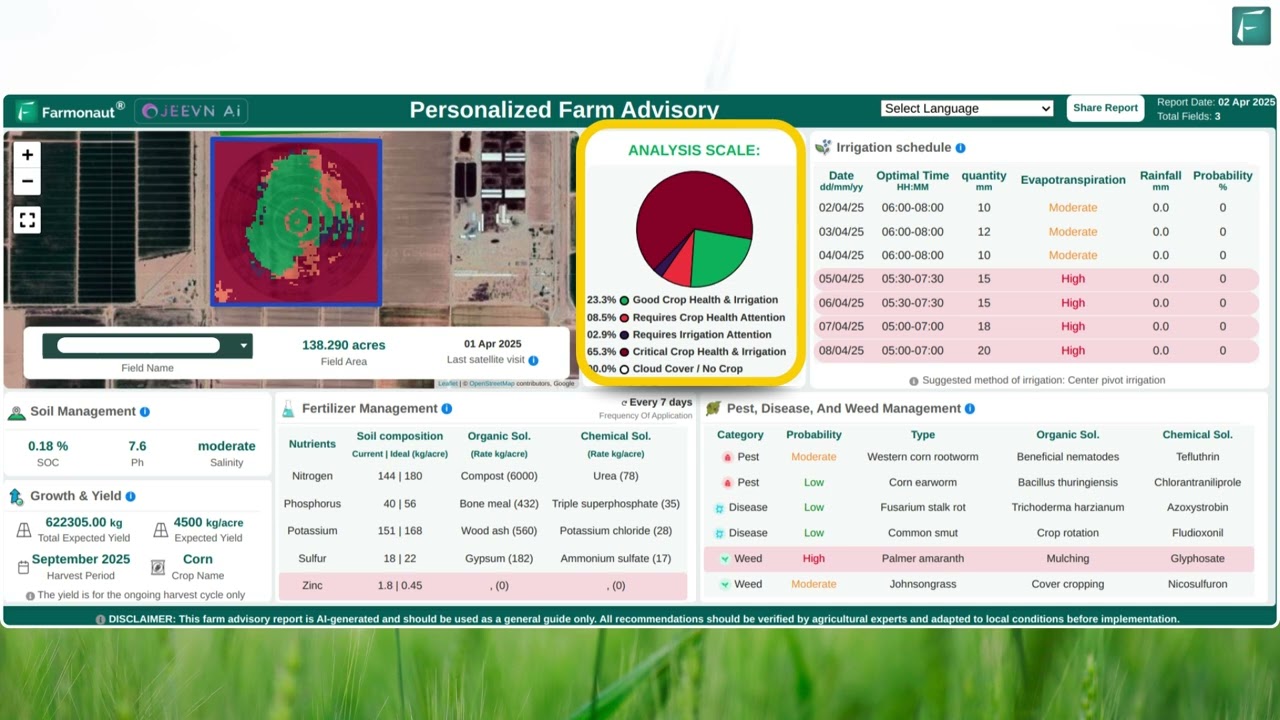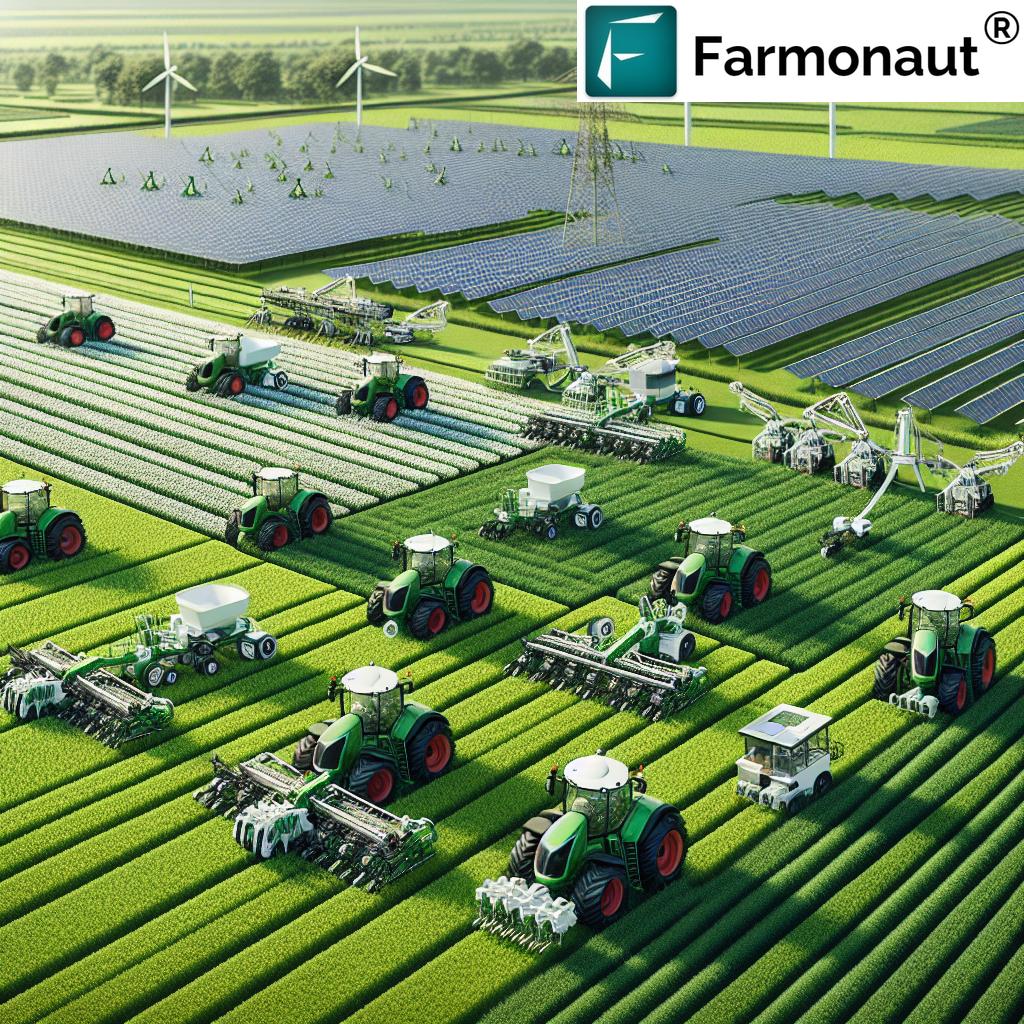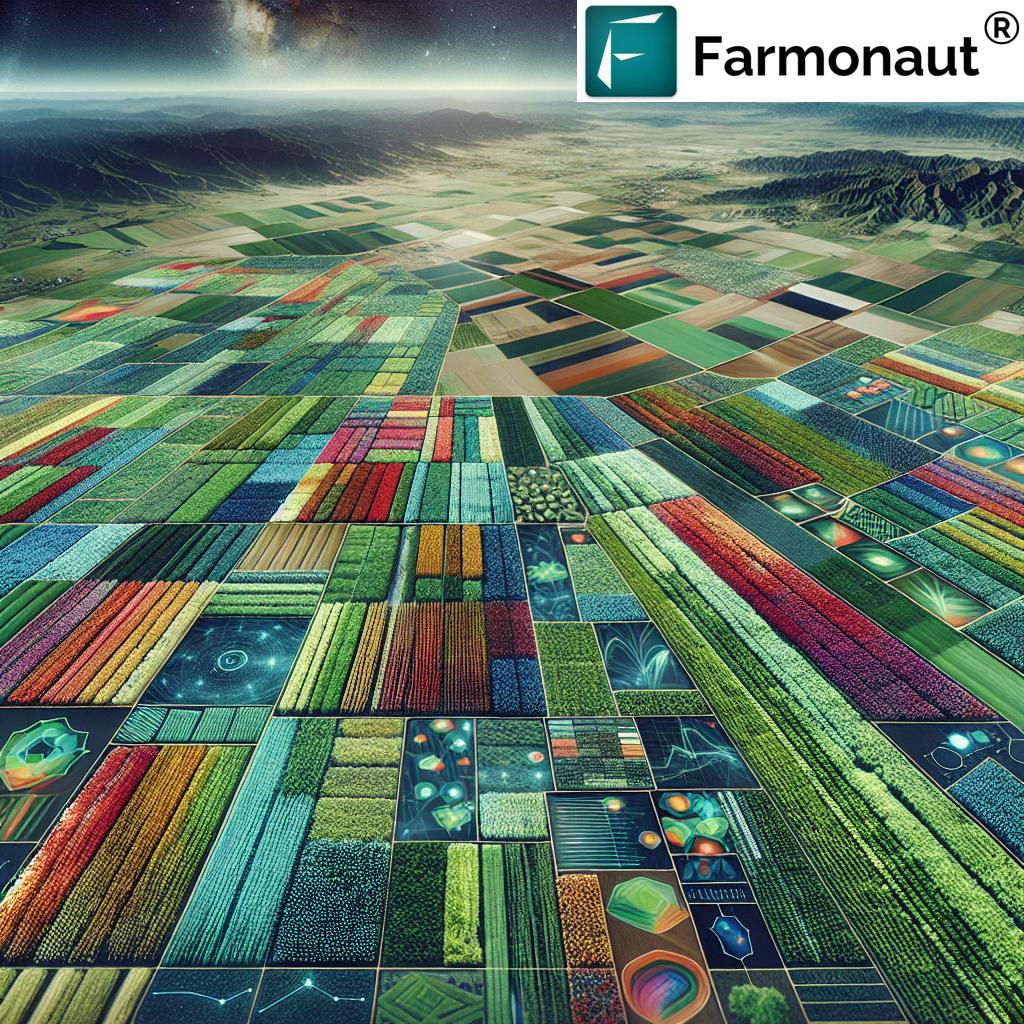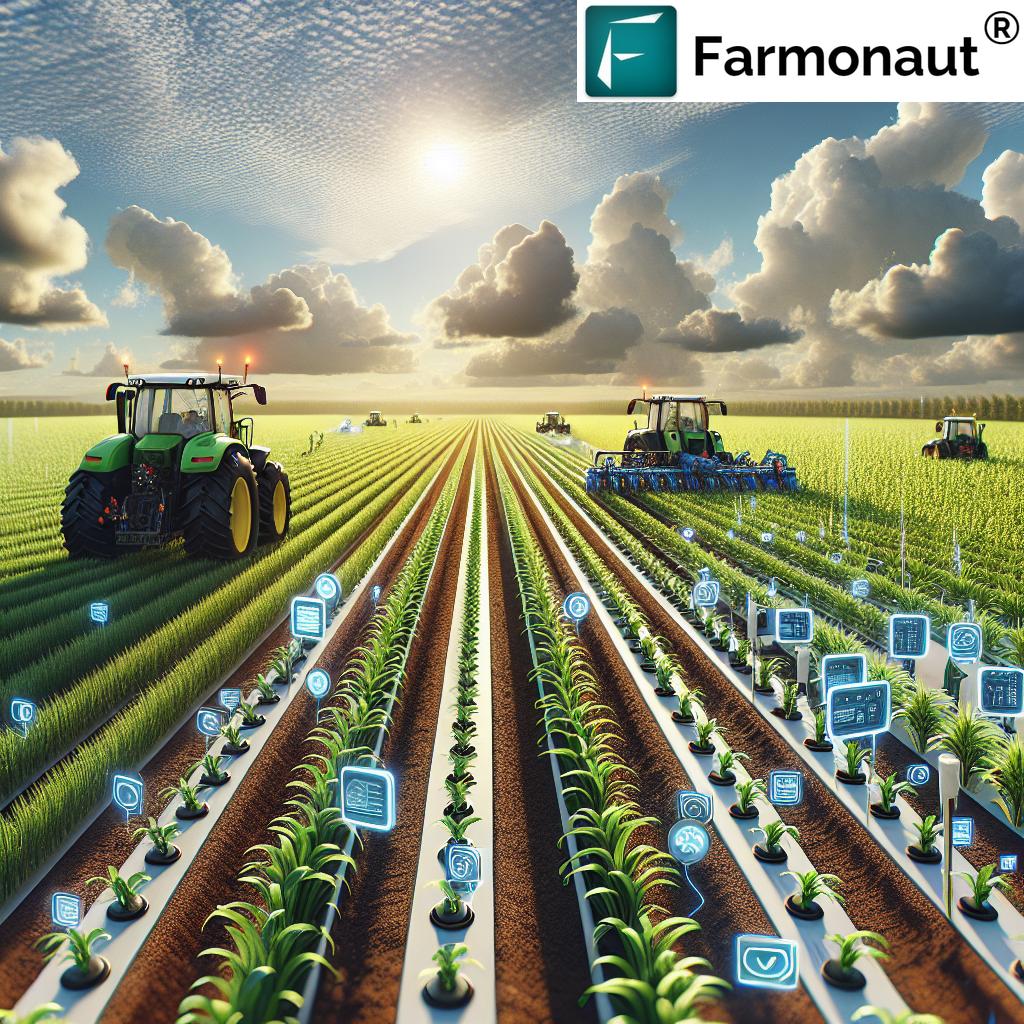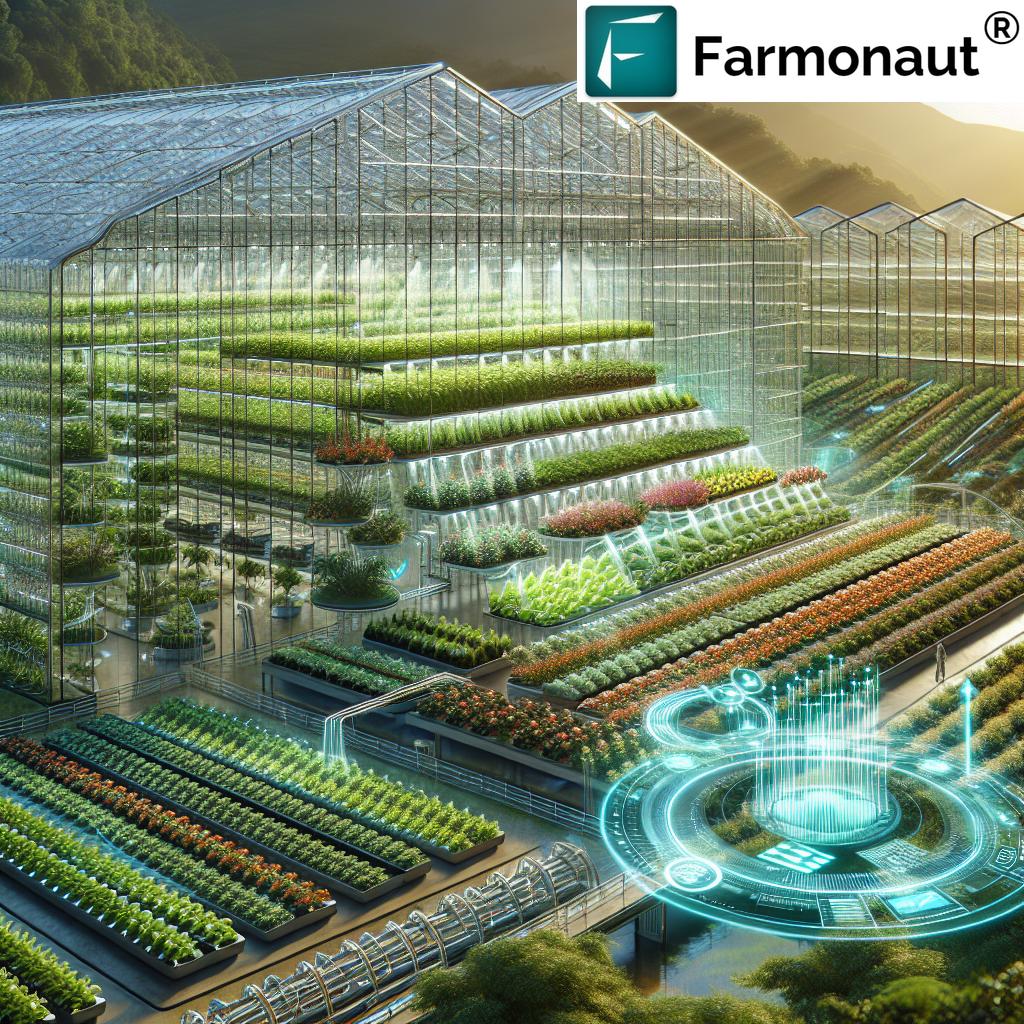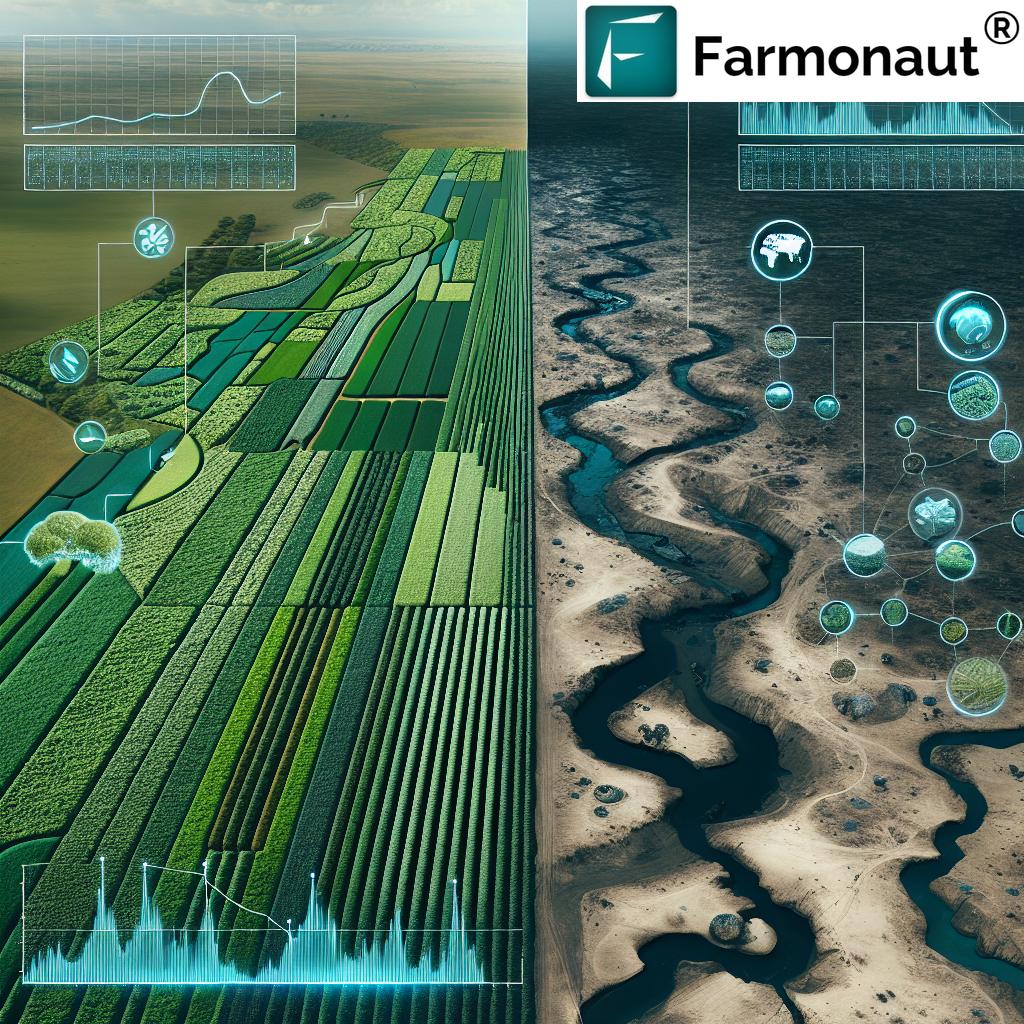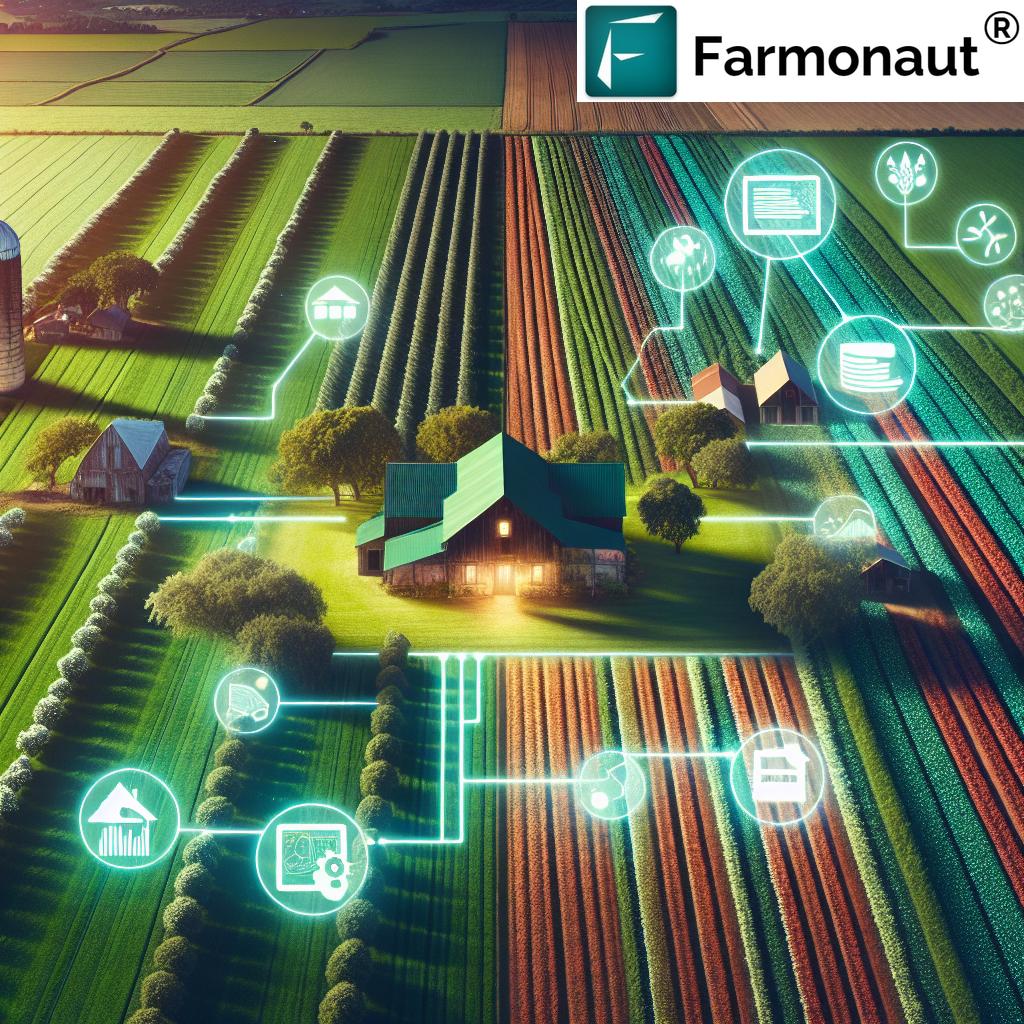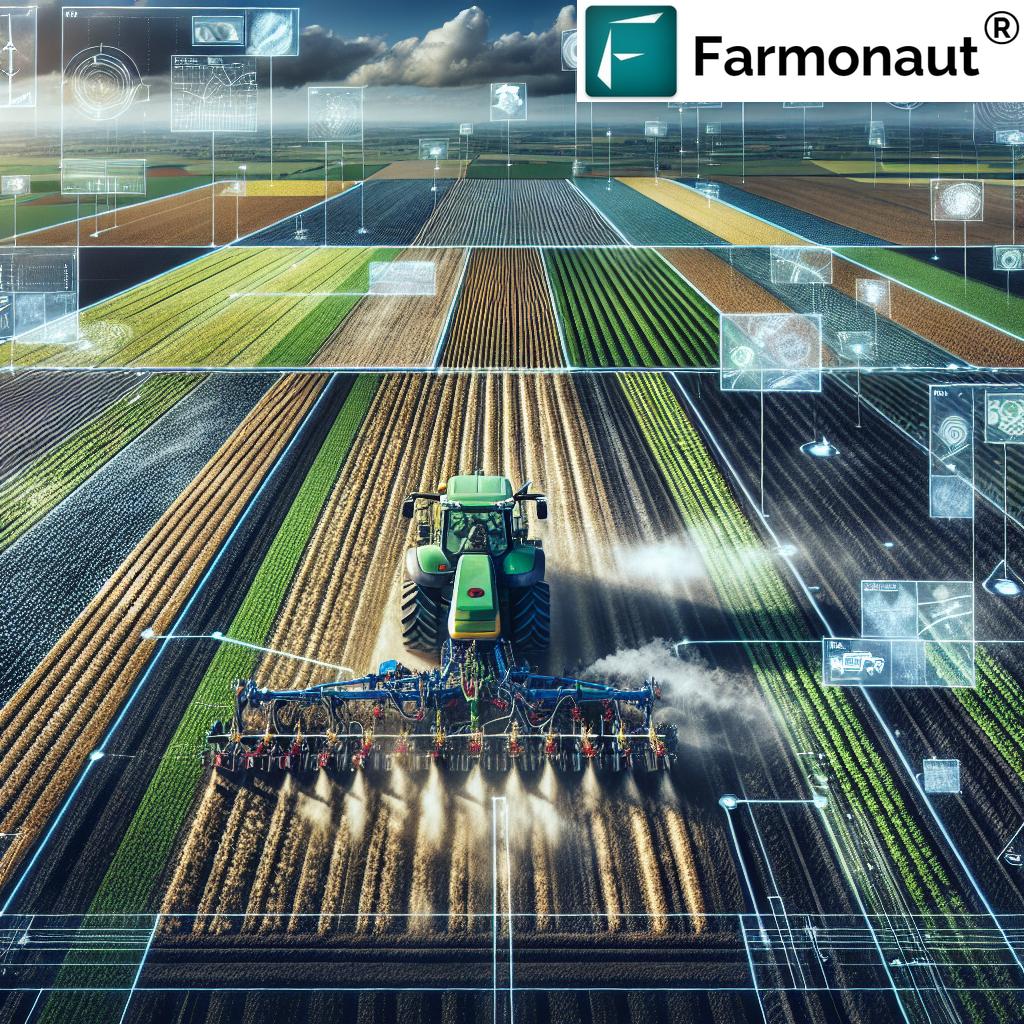Precision Agriculture Yield Increase: 30% Output Boost – AI & Water Savings Redefine Modern Farming 2025
“Precision agriculture and AI can boost crop yields by up to 30% by 2025, revolutionizing modern farming efficiency.”
Introduction: Agriculture’s Quantum Leap with AI & Precision in 2025
The world stands on the brink of a new agricultural era. As global food demand rises and environmental concerns mount, farmers, technologists, and sustainability advocates seek transformative solutions that deliver both higher output and greater efficiency. In 2025, the integration of precision agriculture, artificial intelligence (AI), and advanced resource-management technologies has emerged as the most critical force enabling this leap.
What makes this possible? It’s a revolution born of data: machine learning algorithms analyze millions of data points gathered from satellites, sensors, drones, and field-level technology, enabling farmers to make informed decisions and execute micro-targeted interventions. The result: up to a sustained 30% increase in crop yield percentage—alongside robust precision agriculture water savings percentage, and input optimizations dramatical enough to transform the economics and sustainability profile of farming worldwide.
Let’s explore the real science, practical technologies, and proven methods that deliver these breakthroughs—and see how leading-edge platforms such as Farmonaut are helping farmers and organizations of all scales unlock these benefits today.
Precision Agriculture & AI: The Dual Pillars of Modern Yield Increase
Precision agriculture increase yield percentage—that’s the promise and power behind the best of today’s farming technologies. But what exactly do we mean by “precision agriculture”? This approach uses a data-driven, micro-management philosophy to every square meter of farmland—optimizing inputs, schedules, and interventions based on real-time, highly granular data.
- Precision Agriculture employs modern satellite imagery, soil sensors, drone surveys, and field-level data collection, mapping out the exact needs and conditions of different zones within a field.
- AI in Agriculture leverages these data streams with powerful algorithms. Through machine learning and predictive models, it turns a mountain of complex data into actionable insights and automated recommendations.
- The combination of AI, precision data, and state-of-the-art technologies (like robotics, farm management apps, and satellite platforms) gives farmers the control, information, and agility required to drive output upward—while cutting down on waste.
Why the 30% Yield Increase Matters in Global Agriculture
The ability to boost agriculture percentage of yield by as much as 30% isn’t just a technical curiosity—it’s a critical solution to some of our era’s biggest food security and sustainability challenges.
- Rising Demand: By 2025, the need for food crops continues to surge due to global population growth and shifting dietary patterns, especially in Asia and Africa.
- Finite Land and Water: Expanding farmland isn’t realistic, so output per acre (yield squeeze) must rise to meet demands with current resources—while water reserves in many regions remain highly stressed.
- Sustainability Mandates: Reducing environmental impact from overuse of fertilizers, inefficient irrigation, and chemical-laden pest control is essential for long-term planetary health.
- Economic Competitiveness: Only those farmers and agri-enterprises who leverage modern technologies to get more from less will thrive in an increasingly competitive sector.
This is where we see ai agriculture yield increase percent truly shine, unlocking higher yields without demanding more vital resources (water, fertilizer, labor).
How Precision Agriculture, AI, and Machine Learning Work Together
The integration of precision agriculture, artificial intelligence, and machine learning represents a true synergy in the quest for higher yield and resource efficiency. Here’s how these elements function together:
-
Data Capture: Sensors (embedded in soil and equipment), drones, and satellites (like those used via the Farmonaut platform) collect vast streams of data on:
- Soil health, moisture, and nutrient levels
- Crop growth stages, pest infestations, disease presence
- Weather conditions, field topography, and irrigation coverage
-
AI Analysis & Models: Machine learning algorithms digest this multilayered data, rapidly spotting patterns and predicting:
- Pest or disease risks before they cause visible crop damage
- Moisture or nutrient deficiencies at the micro-plot level
- Optimal planting schedules, fertilizer dosages, and irrigation timing for maximum yield
- Automated Decision & Action: AI-powered systems (including robotics and connected irrigation valves) apply just the right amount of input—no more, no less. Autonomous farm machines and drones can perform harvesting, weeding, and even seeding with incredible pinpoint accuracy.
This virtuous cycle means that every input—from water to fertilizer to labor—is not only monitored and managed but is dynamically and precisely tailored for maximum efficacy, resulting in a precision agriculture increase yield percentage for every field and crop type.
Watch above:
- How AI Drones Are Saving Farms & Millions in 2025: Real-world impacts of AI-powered drone systems in field monitoring and input delivery.
- Satellite Soil Moisture Monitoring 2025: How precision data from satellites delivers smart, efficient irrigation and soil insights.
From Soil to Sky: Precision Techniques & Technologies for Every Field
The modern precision farming toolkit has expanded rapidly, ensuring that every critical factor in crop production is optimized for yield and efficiency:
- Satellite Imaging (learn more about Farmonaut’s technology): Multispectral images capture vegetation health (NDVI), soil conditions, and field boundaries for informed resource management decisions.
- Soil & Crop Sensors: These embedded devices transmit real-time data on moisture and nutrient levels at the root zone—allowing targeted interventions before deficiencies become visible or damaging.
- Drones & Robotics: Drones monitor large fields, map zones of stress or pest infestation, and even spray precise doses of fertilizer or crop protection products. Robotic systems can be programmed for selective weeding and automated harvesting at peak ripeness.
- AI-Driven Decision Platforms: These advanced models (such as Farmonaut’s AI-based advisory via mobile app) provide season-long, real-time, customized insights based on both weather forecasts and on-field data.
- Blockchain Traceability (explore Farmonaut traceability SaaS): Secure blockchain records offer end-to-end product tracing, ensuring crop origin and farming practices transparency—fostering trust in food supply chains.
Precision Agriculture Increase Yield Percentage: How Is 30% Achieved?
But where do these extraordinary numbers—a 20% to 30% yield gain—come from? The answer lies in the synergy of multiple optimizations:
- Planting Schedules: AI models select ideal planting windows based on hyperlocal weather forecasts, soil temperature, and moisture.
- Pest & Disease Control: Sensors, satellite imagery, and AI predictions allow targeted action well before visible symptoms emerge—preventing losses.
- Fertilizer Application: Nutrient dosages are precisely tailored to crop growth stage and actual soil needs, eliminating waste and run-off.
- Irrigation: Smart, zone-based irrigation systems ensure not a drop is wasted—maximizing growth while reducing water bills and overhead costs.
- Labor & Machinery: Robotics and automated scheduling optimize fieldwork, minimizing delays (for example, more efficient, damage-reducing harvesting and weeding).
Precision Agriculture Water Savings Percentage: Conserving the World’s Most Vital Resource
Water management is perhaps the second most urgent imperative after yield, especially in water-limited regions across Africa, Asia, and the Americas. AI-driven precision irrigation systems—integrated with sensor and satellite data—are now delivering extraordinary water savings, quantified as:
- Precision Agriculture Water Savings Percentage: 25% – 40% compared to traditional field irrigation. This is achieved by:
- Applying water only to zones that require it (rather than uniform, wasteful coverage).
- Automated schedules triggered by soil moisture sensors and live weather forecasts, ensuring water is delivered only when needed, not by fixed calendar.
- Use of NDWI (Normalized Difference Water Index) in remote sensing for field-by-field moisture assessment.
Watch how satellites and AI are revolutionizing water management in farming with the following video:
Studies show a 20% reduction in water use is common, with best-case scenarios reaching as high as 40%—contributing directly to the sustainability and profitability of 2025’s most advanced operations.
Farmonaut’s Tools for Resource-Wise Water and Crop Management
- Satellite-Based Irrigation Monitoring: Our satellite imagery and sensor integrations let you track soil moisture at multiple depths, ensuring every drop of water delivers value.
- NDWI and Custom Reports: The platform offers NDWI (Normalized Difference Water Index) analytics for precision irrigation, helping you reduce costs while maintaining peak yields.
- AI-Driven Alerts: Farmonaut’s Jeevn AI provides real-time alerts for water stress, irrigation needs, and more (available on web, Android, and iOS apps).
Precision Means Efficiency: Fertilizer, Labor, and Resource Optimization
Precision agriculture and AI aren’t limited to yield alone. Resource optimization is foundational—with big implications for cost, sustainability, and environmental impact.
-
Fertilizer Savings: Precise dosing, targeted to actual soil nutrient requirement, often reduces fertilizer use by 15% to 30%—cutting expenses and runoff pollution.
See how Farmonaut’s Carbon Footprinting tools drive resource-efficient farming in 2025 - Labor Productivity: Robotics, drone scouting, and automated scheduling slash labor hours and ensure key operations (weeding, harvesting, spraying) are performed on-time—reducing crop losses due to delay or labor shortages.
- Fleet Management: For large operations, Fleet Management solutions from Farmonaut optimize machinery use and logistics—cutting fuel/maintenance costs and maximizing productive field time.
- Supply Chain Efficiency: Blockchain-based traceability, as delivered by Farmonaut’s traceability platform, ensures only compliant products progress through the chain—reducing fraud and premium loss.
Each percentage point of saved input and optimized field operation contributes both to the bottom line and to the collective drive for a sustainable agricultural sector.
“AI-driven precision farming methods are projected to save up to 20% more water in agriculture by 2025.”
Comparative Table: Traditional Farming vs Precision Agriculture with AI (2025)
| Key Metric | Traditional Farming (Estimated Values) | Precision Agriculture with AI (Estimated Values, 2025) |
|---|---|---|
| Crop Yield Increase (%) | Baseline | +20% to +30% (yield boost) |
| Water Saved per Acre (%) | 0% – 5% (minimal savings) | 25% – 40% (precision agriculture water savings percentage) |
| Fertilizer Usage Reduction (%) | 0% – 10% | 15% – 30% (with targeted application) |
| Resource Optimization Score | Moderate (score: 4/10) | High (score: 9/10) |
| Sustainability Index | Low–Moderate (index: 5/10) | High (index: 9/10, environmental and economic) |
Key Takeaways:
- The ai agriculture yield increase factor is clear and significant: up to 30% more output per field under precision agriculture.
- Precision approaches drastically reduce input costs on water and fertilizer—defining the future of profitable, sustainable agriculture.
Farmonaut: Advanced Satellite & AI Tools for Elevated Crop Yields and Resource Savings
As demands on modern farming intensify, advanced tools are critical. At Farmonaut, we’re committed to making satellite-driven insights and AI-powered solutions accessible and affordable to farmers, agri-businesses, and governments worldwide.
Here’s how our platform empowers a precision-driven harvest
- Satellite-Based Crop Monitoring: Access multispectral NDVI imaging for vegetation health, soil status, and field differentiation.
- Jeevn AI Advisory: Real-time recommendations for planting schedules, input timing, pest prevention, and efficiency boosting strategies—delivered in the palm of your hand via Android, iOS, and web app.
- Blockchain Traceability: Use traceability to secure your crop’s journey from field to consumer, building trust with customers and buyers.
- Environmental Impact & Carbon Footprinting: Monitor your carbon impact and progress toward sustainability using our carbon footprint analysis suite.
- Crop Loan & Insurance: Improve financing access with satellite verification for crop loans and insurance claims—cutting fraud and speeding up approvals.
- Fleet Management: Streamline machinery efficiency and reduce unnecessary field runs with our fleet management controls.
- Large-Scale Farm Oversight: Administer multiple farms or regions using Agro Admin app for large-scale management.
Our API (see docs) puts all this intelligence at your fingertips for custom integrations.
Why Satellite Technology is the Backbone of 2025 Precision Agriculture
- Affordable & Scalable: No need for expensive on-ground hardware—Farmonaut delivers frequent, affordable updates globally via satellite, making management of large or remote regions possible.
- Maximum Coverage, Minimal Intrusion: Satellite-powered tools monitor every acre without disturbing the crop—vital for data collection during critical growth stages.
Revolutionizing Sustainability: Environmental & Economic Impact
The convergence of AI and precision agriculture is driving more than record-breaking output—it’s setting a new sustainability standard for global agriculture:
- Reduction in Greenhouse Gases: Lower input use reduces emissions from fertilizer and diesel-powered machinery. See how precision carbon monitoring can help you track progress.
- Prevention of Water & Soil Depletion: Optimized irrigation and fertilization practices conserve soils and aquifers—delivering peak productivity now and for future generations.
- Traceable, Transparent Agriculture: Blockchain-driven traceability gives buyers, consumers, and regulators proof of responsible farming—boosting premium prices for quality crops.
- Improved Biodiversity & Field Health: Targeted pest and weed interventions (thanks to AI’s predictive power) minimize chemical overuse and preserve beneficial insects and soil life.
Challenges & Opportunities: What’s Next on the Road to 2025?
While the results are transformative, several challenges remain in making AI-driven precision agriculture universal:
- Investment Requirements: High-tech systems require upfront capital—though solutions like satellite-based Farmonaut eliminate most hardware needs.
- Technical Know-How: Farmers and agri-leaders need training and support to interpret advanced insights for optimal decision-making.
- Data Privacy: As with all digital platforms, data security and ownership questions are paramount.
The big opportunity: As new business models, government incentives, and educational outreach expand, even smallholders will access the tools needed for AI-powered yield increases and sustainable resource savings. AI-enhanced genomic crop breeding, integrated pest management, and new methods for blockchain transparency will open new frontiers in modern agriculture for 2025 and beyond.
How to Get Started: Seamless Tools & Mobile-Ready Solutions
Ready to join the agricultural revolution? With advanced, easily accessible platforms like Farmonaut, you can realize the full power of precision agriculture increase yield percentage, AI crop management, and water savings wherever you farm.
- Farmonaut Web App – See real-time satellite data, NDVI/NDWI analytics, resource management, and yield analytics directly from browser or device.
- Mobile Apps – Get Android or iOS to manage fields on the move.
- Custom API & Data Integration – For developers and businesses: Farmonaut’s Satellite API and developer documentation let you build and scale bespoke solutions for large commercial operations, agri-platforms, and government projects.
- Fleet Management, Crop Insurance, and Traceability: Leverage our all-in-one suite for fleet management, traceability, and crop loan/insurance verification in agriculture.
Farmonaut Subscriptions: Scalable, Affordable, Powerful
Our flexible subscription options are built for individual farms to large agri-enterprises and government projects. Explore plans, compare feature sets, and get started with full API, mobile, and satellite service via:
Frequently Asked Questions: Precision Agriculture, AI & 30% Yield Increase
-
What is precision agriculture, and how does it increase yield?
Precision agriculture employs data from satellites, sensors, and field technology to optimize input use (water, fertilizer, seed, etc.) on a micro-level, ensuring every crop receives exactly what it needs. AI then analyzes this data, enabling informed decisions, targeted interventions, and up to a 30% boost in crop yields compared to traditional methods. -
What is AI’s role in agriculture yield increase percentage?
AI detects subtle patterns in data, predicts pest or disease outbreaks before they visibly harm crops, schedules optimal planting/harvesting, and tailors resource delivery. This maximizes yield and prevents losses—driving the agriculture yield increase percent into double digits. -
How much water can be saved with precision agriculture?
Adoption of precision irrigation and AI-powered water management can lead to water savings per acre of 25-40%, delivering sustainability and cost benefits. -
Is it affordable for small and medium farms?
Solutions like Farmonaut’s satellite-based apps dramatically reduce the need for heavy hardware and onsite setups, making precision agriculture technologies accessible to users at all scales. -
What are the main challenges of adopting precision and AI farming?
Main challenges include upfront investment costs, the need for training in data interpretation, and addressing data privacy concerns. User-friendly apps, smart subscriptions, and government/NGO support are expanding access rapidly. -
How can farmers, agri-enterprises, and developers get started with Farmonaut’s solutions?
- Download Android or iOS apps, or start with the web app (here).
- For integration, use the API (details here).
- Learn about subscription options for full-scale projects via the pricing table above.
Conclusion: Powering a Greener, More Productive Farming Future
In 2025, precision agriculture and AI stand undisputed as the transformative force behind modern farming’s new success story. The ability to consistently increase yield percentage by 20-30%, achieve 25-40% water savings, and optimize all aspects of resource use is a turning point for the global agricultural sector.
Whether you’re a farmer seeking higher productivity, a business looking for scalable insights, or a government building food security and sustainability policy—the time to embrace AI-empowered, satellite-driven solutions is now. With accessible platforms and advanced technologies, a future where food security and environmental sustainability go hand in hand isn’t just possible—it’s already here.
Ready to get started? Join Farmonaut’s global platform today for actionable, real-time insights—and become part of a revolution that will define agriculture for generations to come.







